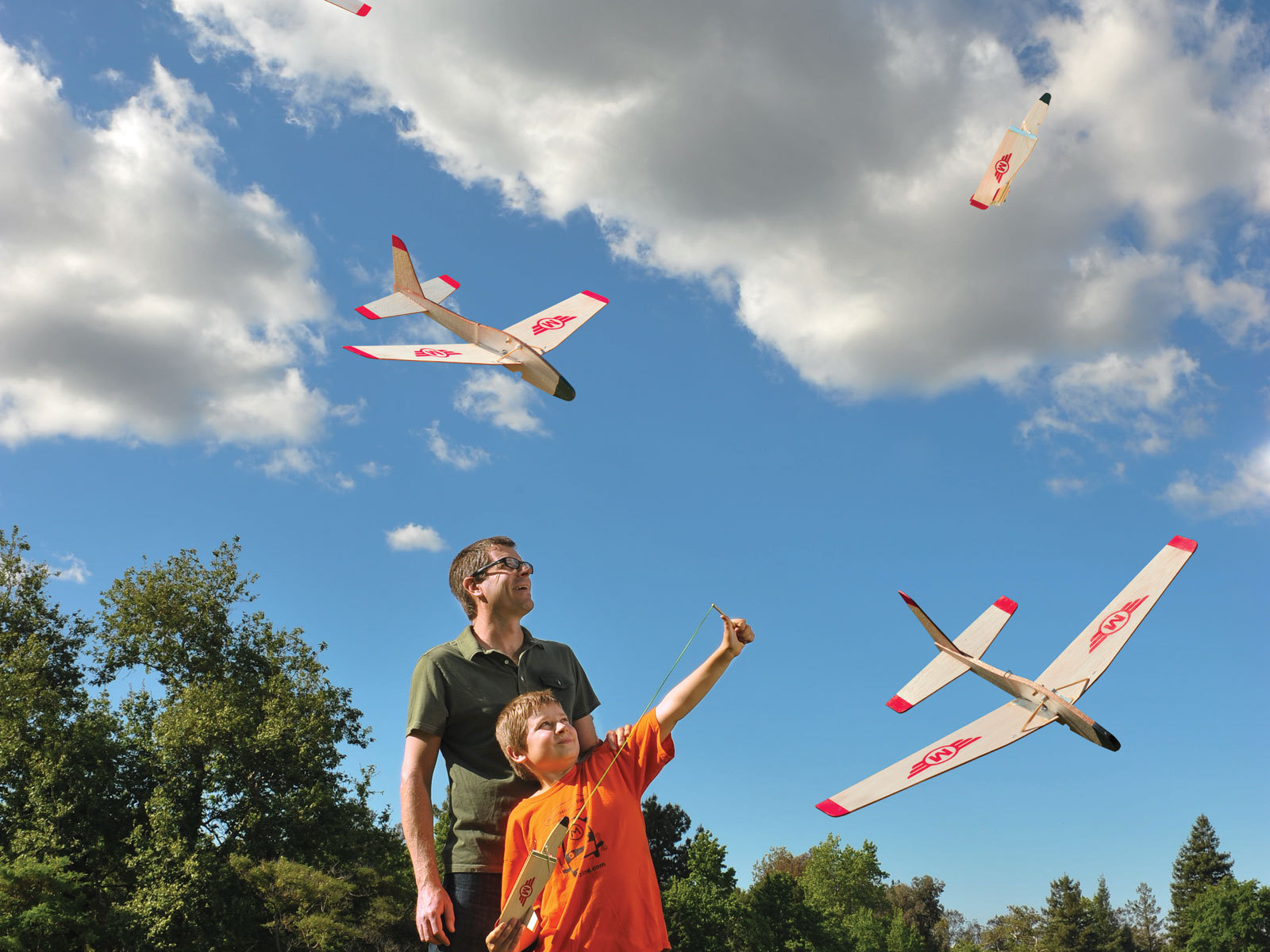As a kid, I remember my dad talking about this seemingly magical balsa wood rocket glider. With the wings folded back, the glider shot into the air using a hand held rubber band attached to a stick catapult. Wind resistance held the wings back, then when the glider reached its peak, the wings popped open for a long and graceful glide down. Especially exciting to me, was when the glider began to wear out, he would attach a fire cracker to it and then launch it into a shower of balsa wood confetti glory.
About ten years ago I began thinking about this glider and whether or not it was still available. I found a science supply company who sold one for about ten bucks that looked similar so I bought three or four. Wow, these little gems proved to be super fun. I was used to the standard hand-toss glider that flew 20 or 30 feet for a few seconds. This one zipped straight into the sky to about 60 or 70 feet! Fishing them out of trees and weeds, we played with these like kids for hours. Eventually they wore out, but in a recent cleaning out of my basement, I came across one mostly intact. This got me thinking about the rocket glider again.
I began researching on the internet about the glider and there was very little information to be found. But what I did find, proved quite valuable. For one, the glider I was familiar with was no longer being made and had been out of production for some time. This glider was based on the original folding wing glider designed by Jim Walker and his company American Junior Aircraft Company, in the late 1930’s. The patent had long since expired so another company made a glider based on the original design. I began communicating with Scott Giffith who is the current historian for the Jim Walker’s collection. Jim Walker was an innovator of a number of products including control line airplanes, a sonic control glider and remote control lawnmower. He developed the original folding wing glider called the Folding Wing Interceptor in 1939 and after securing the patent, began producing them near Portland Oregon. With the development of a tripod style catapult (to be featured in the next issue of MAKE) to launch the glider nearly 300 feet in the air, Jim’s glider caught the interest of the US Army and the Army began using them for artillery practice during World War II. 232 million models were produced during the lifetime of the company. In 2004, Frank Macy, friend of Jim Walker and long time official historian, made his final reproduction of the original Interceptor. Also in 2004, Paul Bradley added some micro remote control units to the glider with some success. Paul recently said, “With modern micro R/C a much lighter weight model could now be made.”
With these gliders out of production, I had to have a new stock of my own. In the past, balsa wood planes would be punched out using a large die machine with metal cutting blades. After a certain run, the dies would wear out and need to be replaced. With modern laser cutting technology, a perfect cut is achieved every time. Using the one remaining glider I had left, with help from some folks at the Tech Shop, I began reverse engineering the project and now present it here to MAKE readers as a how-to. Along with MAKE, I’ve also developed it into a handy kit available from the Maker Shed with the parts pre-cut and ready to fly in just about an hour. Like many fans of this glider over the years… pull the glider back on the hand-held catapult, aim straight up and let it rip!
Downloads
Download CDR or DMG files for the laser cutter, or the print-scale PDF for hand cutting.


